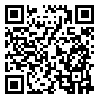Volume 1, Issue 2 (2020)
san 2020, 1(2): 120-142 |
Back to browse issues page
Download citation:
BibTeX | RIS | EndNote | Medlars | ProCite | Reference Manager | RefWorks
Send citation to:



BibTeX | RIS | EndNote | Medlars | ProCite | Reference Manager | RefWorks
Send citation to:
Aghaei M. Narrative Structure and Characterization in The Ring of Pigeons. san 2020; 1 (2) :120-142
URL: http://san.khu.ac.ir/article-1-114-en.html
URL: http://san.khu.ac.ir/article-1-114-en.html
Assistant Professor, Department of Arabic Language and Literature, Mohaghegh Ardabili University, Ardabil, Iran , m.aghaei@uma.ac.ir
Abstract: (5411 Views)
Story results from a writer’s fantasies, feelings, and inner fears which are expressed in word form. Fictional characters emerge from the depths of the writer’s existence and enter the world of fiction. In general, we can say that the story comes from reality and illustrated by the author’s mind. Usually, authors use different metaphorical expressions to convey their intended message. The Collar of Pigeons, a novel Raja'a Alem, records social and religious events occur in Mecca and Madrid. Here, the Kaaba is a symbol of holiness though some people attempt to degrade its holiness. In terms of characterization, the novel is quite unusual: Raja uses dialogue, description, and inclusion to describe and present the characters of her novel, who are mostly complementary ones. The religious and imaginative atmosphere of the story along with its controversial structure has attracted numerous readers. The chronological, spatial, and logical arrangement of events in presenting characters follows a linear narrative flow. The formal structure of the story is divided into two parts, each with a different location. Different characters are identified with different “Izzah” identity. When examining the characters of the novel, it becomes clear to that the author considers maintaining the identity of the Kaaba, the main concern of the novel, by placing the narrative center in the Kaaba and the events that happen in this holy place. This article adopts an analytical and descriptive method to analyze strategies of characterization in the order, continuity, and arrangement of different parts of the novel.
Keywords: contemporary novel, characterization, Raja Alam, pigeon collar, Alley narration, Arabic Narratology.
References
1. • ابن منظور،محمدبن مکرم (1985)، لسان العرب، القاهرة: دار المعارف.
2. • اخوت، احمد (1371ش)، دستور زبان داستان، تهران: نشر فردا.
3. • آقائي،مهرداد و عفاف داغري(2020)، «روایة حین ترکنا الجسر لعبدالرحمن منیف (دراسة في الأنا والغیر)»، مجلة دراسات في السردانیة العربیة، المجلد الأوّل،العدد الأوّل، صص 186-210.
4. • بورنوف، رولان؛ اوئله رئال (1378ش)، جهان رمان، نازیلا خلخالی، تهران: مرکز.
5. • بيات،حسين، ( 1387ش)، داستان نويسي جريان سيال ذهن،تهران،شركت انتشارات علمي و فرهنگي.
6. • حمداوي، جمیل(1998)، السیموطیقا و العنونة، مجلة عالم الفکر، کویت: المجلس الوطني للثقافة و الفنون و الآداب.
7. • داودي، أمينة (1436ق)، «المتخیل السردي في روایة طوق الحمام لرجاء عالم»، جامعة العربي بن مهیدي أم البواقي بالجزائر.
8. • سلیمان، نبیل(2006)، أسرار التخیل الروائي، دمشق: منشورات اتحاد الکتاب العرب.
9. • عالم، رجاء (2011)، طوق الحمام، المرکز الثقافي العربی، دار النشر.
10. • العتیبي، فاطمة بنت فیصل(1430ق)، السردانیة النسویة دراسة تطبیقیة علی روایات رجاء عالم، جامعة الملک سعود بالریاض.
11. • فیدوح، عبد القادر(2016)، «المتخيل وتماثل نور التجلي في رواية حُبَّى لـرجاء عالم» مجلة الأثر العدد 25.
12. • القباني، حسین(1979)، فن کتابة القصّة، بیروت: دار الجیل.
13. • کریمي، شرافت (2016)، «رجاء عالم و الحداثة في الروایة العربیة» محاضرة أقامتها جامعة كردستان الإیرانیة.
14. • مرتاض، عبدالملک(1998)، في نظریة الروایة، الکویت: المجلس الوطني للثقافة.
15. • میرصادقي، جمال (1386)، ادبیات داستانی قصه، رمانس، داستان کوتاه. تهران: انتشارات سخن.
16. • وادي،طه (1994)، دراسات في نقد الروایة، القاهرة: دار المعارف.
17. • يونسی، ابراهیم (1386)، هنر داستاننویسی، تهران: انتشارات امیرکبیر.
18. • Ibn Manzur, Muhammad Ibn Makram (1985). Lisan Al-Arab. Cairo: Dar Al-Maarif.
19. • Okhovat, Ahmed (1993). Dastoure Zabbane Dastan. Tehran.
20. • Akai, Mehrdad and Afaf Daghri (2020), "A novel when we left the bridge by Abdul Rahman Munif (A Study in the Ego and Others)". Journal of Studies in Arab Sardaniyya, Volume 1, Number 1.
21. • Bornov, Roland, Awal Raal (1999). Jahan Rumman, Nazila Khalkhali. Tehran: Center.
22. • Bayat, Hussain (2008). Dastan Noyisi Jiryan Sial Dhan. Tehran: Scientific and Farhanghi Spread Companies.
23. • Hamdaoui, Jamil (1998). "Simotika and addressing". Journal of the World of Thought, Kuwait.
24. • Daoudi, Amina (1436 BC)"The Narrative Imagination in the Narration of Tawkat Al-Hamam for Rajaa Alam",Al-Arabi Bin Mahidi University or Al-Baqi in Algeria.
25. • Suleiman, Nabeel (2006). Secrets of Novel Imagination. Damascus: Publications of the Arab Writers :union:.
26. • Alem, Rajaa (2011). The Collar of Pigeons. The Arab Cultural Center.
27. • Al-Otaibi, Fatima Bint Faisal (1430 BC), "Feminist Narrative: An Applied Study on the Narrations of Raja Alam". King Saud University, Riyadh.
28. • Faidouh, Abdel-Qader (2016), "The Imagine and the Light of Evidence of Transfiguration in the Novel of Habi to Raja Alam". Al-Athar Magazine.
29. • Al-Qabbani, Hussein (1979), The Art of Story Writing. Beirut: Dar Al-Jeel.
30. • Karimi, Sharafat (2016). "Rajaa Alem and Modernity in the Arabic Novel". a lecture at Kurdistan University.
31. • Murtada, Abdul-Malik (1998). Theory of Novel. Kuwait: The National Council for Culture.
32. • Mirasadqi, Jamal (2007). Dastani Qasah Literature, Ramanas, Dastan Kutah. Tehran.
33. • Wadi, Taha (1994), Studies in the Critique of Narration, Cairo: Dar al-Ma'arif.
34. • Yunusi, Ibrahim (2007). Honar Dastanwenisi. Tehran: Amirkabir.
Send email to the article author
| Rights and permissions | |
 |
This work is licensed under a Creative Commons Attribution-NonCommercial 4.0 International License. |







